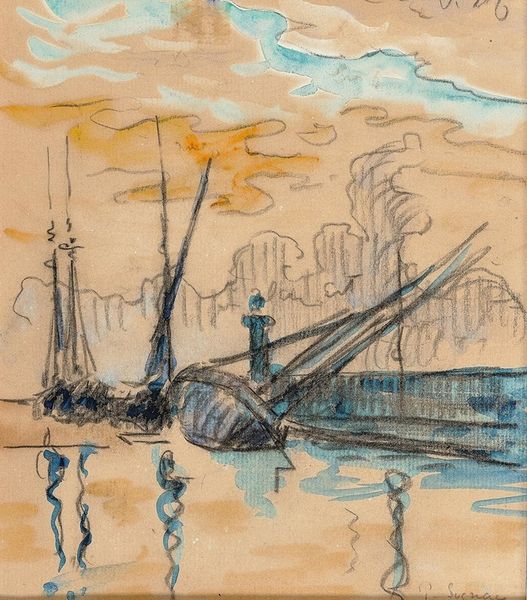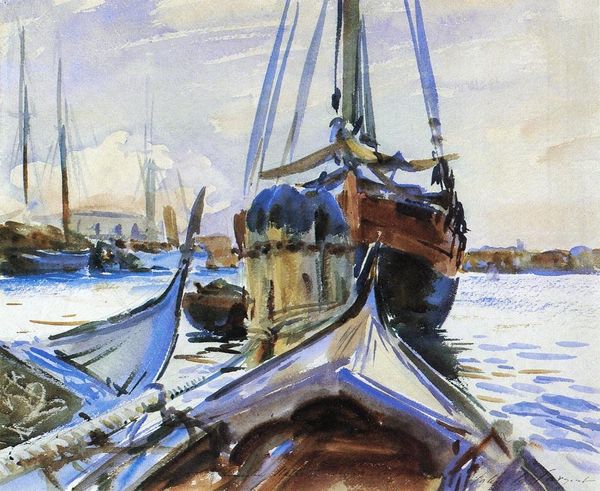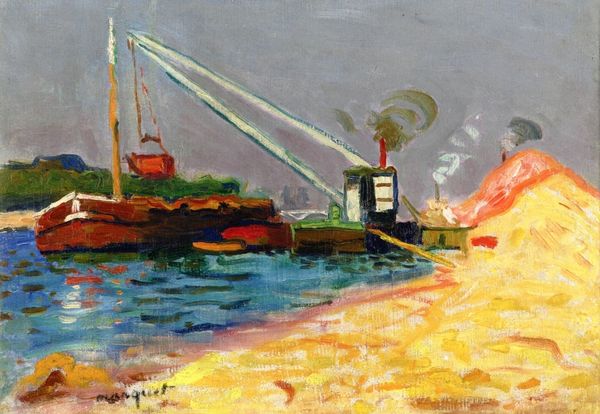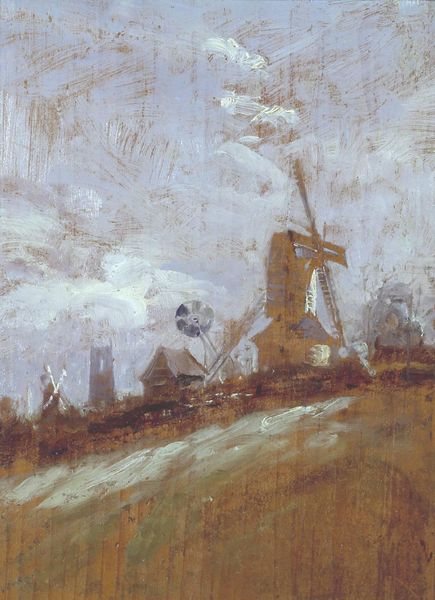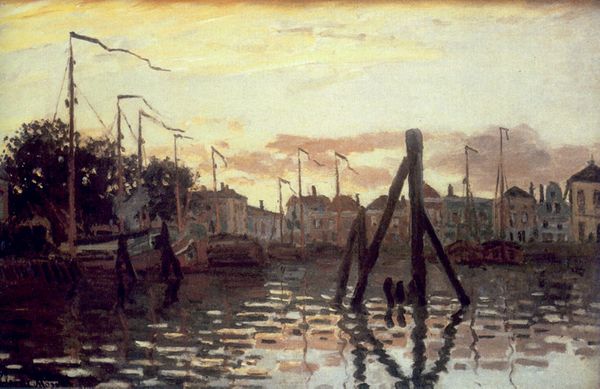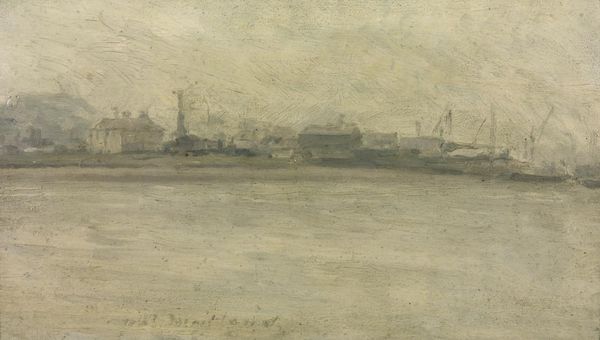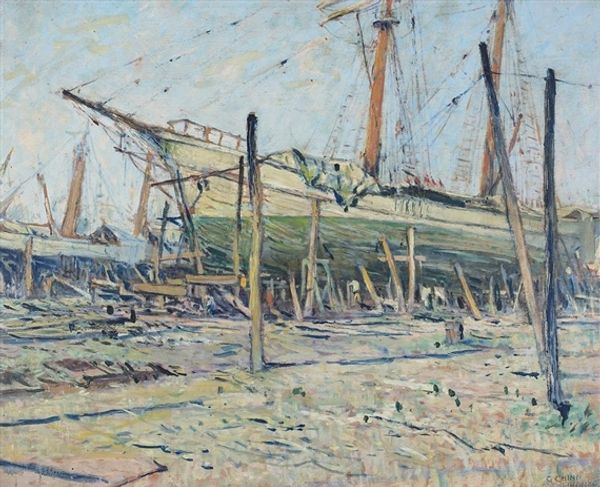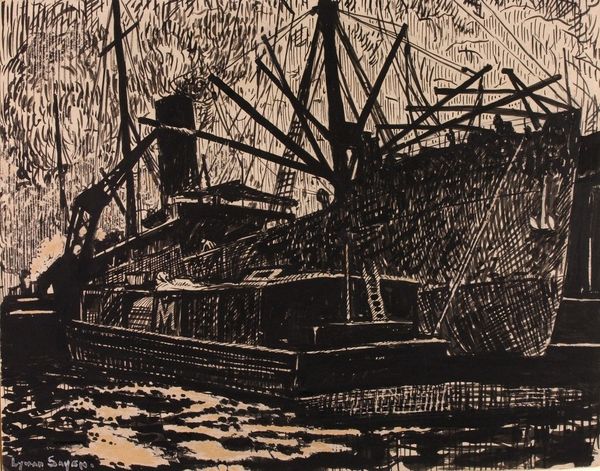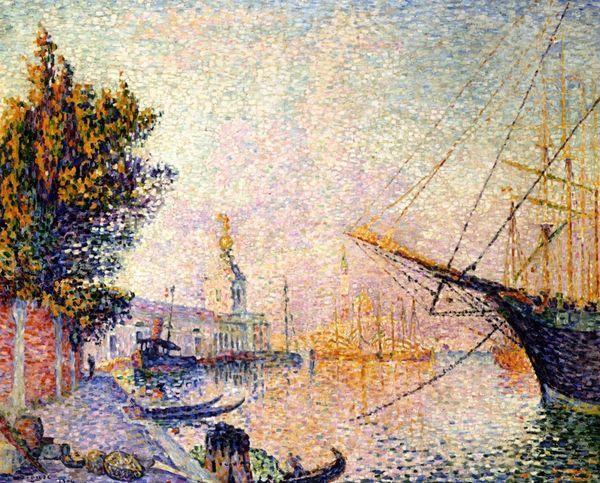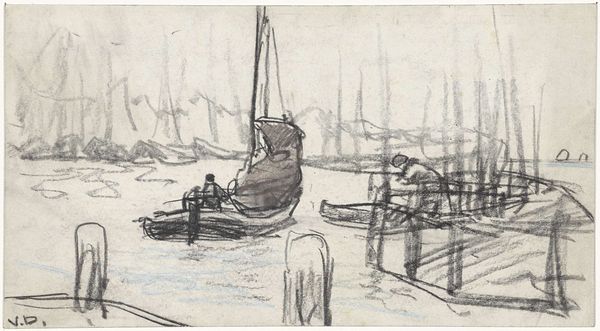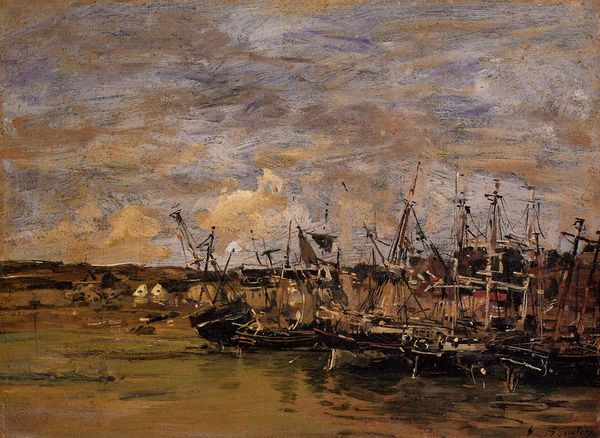
painting, oil-paint
#
painting
#
impressionism
#
oil-paint
#
landscape
#
oil painting
#
cityscape
#
post-impressionism
#
watercolor
Copyright: Public Domain: Artvee
Editor: We’re looking at "Quai de la Rapée, Paris," an 1884 oil painting by Armand Guillaumin. The palette is muted, almost dusty, and I find it a bit somber despite depicting a fairly active industrial scene. How do you interpret this work? Curator: I see this painting as Guillaumin engaging with a crucial debate of his time: the representation of modernity. Instead of glorifying industrial progress outright, he presents us with its inherent ambiguities. Notice how the smoke from the factories mingles with the Parisian sky, blurring the lines between nature and industry. Is he celebrating progress, or critiquing its effects on the environment? Editor: That's interesting. So, it’s not just a straightforward landscape. Were there specific exhibitions or artistic circles that shaped this kind of nuanced perspective? Curator: Absolutely. The Impressionists, and later the Post-Impressionists like Guillaumin, were deeply involved in representing modern life. Think about the Salon des Refusés, a space created to showcase works rejected by the official Salon. It was a hub for artists pushing boundaries and challenging conventional representations of beauty. This piece subtly critiques the price of industrial advancement, a recurring theme amongst artists grappling with urbanization. The portrayal of the working class is also notable, depicting them more as cogs in the machine rather than romanticized laborers. Editor: So, the subdued colours and the obscured figures aren’t just stylistic choices; they contribute to the overall commentary? Curator: Precisely. Every element serves a purpose in reflecting the complex relationship between society, industry, and art. The artwork invites us to contemplate the societal costs of what was once heralded as innovation and evolution. Editor: That’s given me a whole new way of thinking about Impressionism and its relationship to social commentary! Curator: Indeed. It's a valuable lesson in how art often holds a mirror to society, reflecting its hopes and anxieties.
Comments
No comments
Be the first to comment and join the conversation on the ultimate creative platform.
